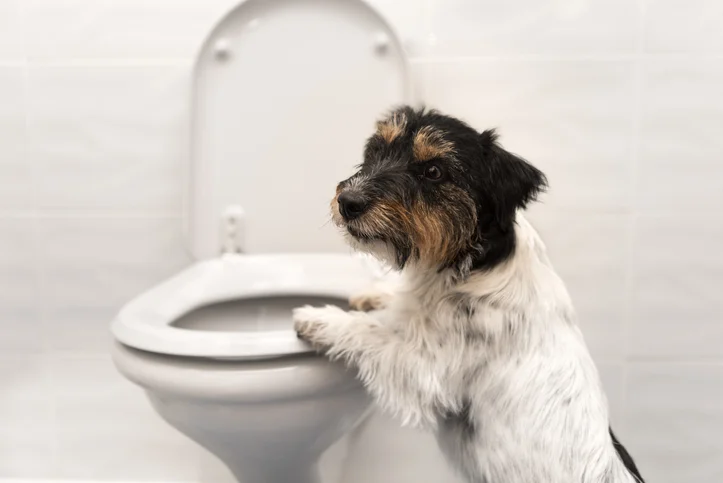Our Significance of Proper Disposal of Animal Waste
Our Significance of Proper Disposal of Animal Waste
Blog Article
How do you actually feel in relation to Why you should never flush dog poop down the toilet?

When it comes to throwing away waste, specifically animal waste, lots of people often consider the practical alternative of flushing it down the commode. However, this relatively very easy remedy can have major consequences for the environment and public health. In this article, we'll discover why flushing pet waste down the toilet is a bad idea and offer alternative methods for correct disposal.
Intro
Appropriate garbage disposal is essential for maintaining ecological sustainability and public health. While it may seem harmless to purge animal waste down the bathroom, it can cause various problems, both for the environment and human well-being.
Threats of flushing pet waste
Ecological impact
Purging animal waste introduces hazardous bacteria and microorganisms into rivers, which can adversely impact marine ecosystems. These virus can pollute water resources and harm marine life, interfering with fragile environments.
Public health worries
Pet waste contains harmful germs such as E. coli and Salmonella, which can posture significant health risks to humans. Purging pet waste down the bathroom can pollute water materials, causing the spread of diseases and infections.
Alternatives to flushing
As opposed to flushing animal waste down the bathroom, there are a number of alternative disposal methods that are much more eco-friendly and hygienic.
Composting
Composting animal waste is an environmentally friendly method to deal with it. By composting, organic matter is broken down into nutrient-rich dirt, which can be utilized to fertilize yards and plants.
Landfill disposal
Throwing away pet waste in a landfill is an additional alternative. While not as environmentally friendly as composting, it is a more secure choice to flushing, as it avoids the contamination of water sources.
Animal waste disposal systems
There are specialized animal garbage disposal systems readily available that safely and hygienically throw away animal waste. These systems commonly utilize enzymes to break down waste and eliminate smells.
Actions to appropriate pet waste disposal
To make certain appropriate disposal of animal waste, adhere to these actions:
Scooping and nabbing waste
Consistently scoop and bag pet waste utilizing biodegradable bags. This stops waste from contaminating the environment.
Using designated waste containers
Dispose of bagged pet waste in assigned waste bins, such as compost containers or land fill containers. Prevent flushing it down the bathroom in any way expenses.
Cleaning can and pet dog areas consistently
Routinely tidy litter boxes and pet locations to prevent the accumulation of waste and bacteria. Usage pet-safe cleansing products to keep health.
Benefits of proper disposal approaches
Embracing appropriate disposal approaches for pet waste supplies several benefits:
Decreased environmental pollution
Proper disposal techniques decrease the risk of environmental pollution, securing rivers and environments from contamination
Reduced risk of water contamination.
By preventing flushing pet waste down the commode, the danger of water contamination is significantly decreased, protecting public health.
Improved hygiene and hygiene
Correct disposal methods advertise much better hygiene and hygiene, producing a safer environment for both human beings and animals.
Final thought
In conclusion, purging pet waste down the bathroom is damaging to the environment and public health. By adopting alternative disposal techniques and complying with appropriate waste monitoring techniques, we can reduce the negative impact of pet waste and contribute to a cleaner, healthier planet.
Why You Should Never Flush Cat Poop Down the Toilet
A rose by any other name might smell as sweet, but not all poop is created equal. Toilets, and our sewage systems, are designed for human excrement, not animal waste. It might seem like it couldn’t hurt to toss cat feces into the loo, but it’s not a good idea to flush cat poop in the toilet.
First and foremost, assuming your cat uses a litter box, any waste is going to have litter on it. And even the smallest amount of litter can wreak havoc on plumbing.
Over time, small amounts build up, filling up your septic system. Most litter sold today is clumping; it is made from a type of clay that hardens when it gets wet. Ever tried to scrape old clumps from the bottom of a litter box? You know just how cement-hard it can get!
Now imagine just a small clump of that stuck in your pipes. A simple de-clogger like Drano isn’t going to cut it. And that means it’s going to cost you big time to fix it.
For an amusing, graphic tale of what happens when you flush too much litter down the toilet all at once, take a few minutes to read Gene Weingarten’s 2017 Washington Post column “So that’s what happens when you flush cat litter down the toilet.”
Parasitic Contamination
Believe it or not, your healthy kitty may be harboring a nasty parasite. Only cats excrete Toxoplasma in their feces. Yet it rarely causes serious health issues in the cats that are infected. Most people will be fine too if infected. Only pregnant women and people with compromised immune systems are at risk. (If you’ve ever heard how women who are expecting are excused from litter cleaning duty, Toxoplasma is why.)
But other animals may have a problem if infected with the parasite. And human water treatment systems aren’t designed to handle it. As a result, the systems don’t remove the parasite before discharging wastewater into local waterways. Fish, shellfish, and other marine life — otters in particular — are susceptible to toxoplasma. If exposed, most will end up with brain damage and many will die.
Depending on the species of fish, they may end up on someone’s fish hook and, ultimately on someone’s dinner plate. If that someone has a chronic illness, they’re at risk.
Skip the Toilet Training
We know there are folks out there who like to toilet train their cats. And we give them props, it takes a lot of work. But thanks to the toxoplasma, it’s not a good idea.
Leave the toilet to the humans, and accept your future litter cleaning duty.

Routinely tidy litter boxes and pet locations to prevent the accumulation of waste and bacteria. Usage pet-safe cleansing products to keep health.
Benefits of proper disposal approaches
Embracing appropriate disposal approaches for pet waste supplies several benefits:
Decreased environmental pollution
Proper disposal techniques decrease the risk of environmental pollution, securing rivers and environments from contamination
Reduced risk of water contamination.
By preventing flushing pet waste down the commode, the danger of water contamination is significantly decreased, protecting public health.
Improved hygiene and hygiene
Correct disposal methods advertise much better hygiene and hygiene, producing a safer environment for both human beings and animals.
Final thought
In conclusion, purging pet waste down the bathroom is damaging to the environment and public health. By adopting alternative disposal techniques and complying with appropriate waste monitoring techniques, we can reduce the negative impact of pet waste and contribute to a cleaner, healthier planet.
Why You Should Never Flush Cat Poop Down the Toilet
A rose by any other name might smell as sweet, but not all poop is created equal. Toilets, and our sewage systems, are designed for human excrement, not animal waste. It might seem like it couldn’t hurt to toss cat feces into the loo, but it’s not a good idea to flush cat poop in the toilet.
First and foremost, assuming your cat uses a litter box, any waste is going to have litter on it. And even the smallest amount of litter can wreak havoc on plumbing.
Over time, small amounts build up, filling up your septic system. Most litter sold today is clumping; it is made from a type of clay that hardens when it gets wet. Ever tried to scrape old clumps from the bottom of a litter box? You know just how cement-hard it can get!
Now imagine just a small clump of that stuck in your pipes. A simple de-clogger like Drano isn’t going to cut it. And that means it’s going to cost you big time to fix it.
For an amusing, graphic tale of what happens when you flush too much litter down the toilet all at once, take a few minutes to read Gene Weingarten’s 2017 Washington Post column “So that’s what happens when you flush cat litter down the toilet.”
Parasitic Contamination
Believe it or not, your healthy kitty may be harboring a nasty parasite. Only cats excrete Toxoplasma in their feces. Yet it rarely causes serious health issues in the cats that are infected. Most people will be fine too if infected. Only pregnant women and people with compromised immune systems are at risk. (If you’ve ever heard how women who are expecting are excused from litter cleaning duty, Toxoplasma is why.)
But other animals may have a problem if infected with the parasite. And human water treatment systems aren’t designed to handle it. As a result, the systems don’t remove the parasite before discharging wastewater into local waterways. Fish, shellfish, and other marine life — otters in particular — are susceptible to toxoplasma. If exposed, most will end up with brain damage and many will die.
Depending on the species of fish, they may end up on someone’s fish hook and, ultimately on someone’s dinner plate. If that someone has a chronic illness, they’re at risk.
Skip the Toilet Training
We know there are folks out there who like to toilet train their cats. And we give them props, it takes a lot of work. But thanks to the toxoplasma, it’s not a good idea.
Leave the toilet to the humans, and accept your future litter cleaning duty.

Do you enjoy reading about Should you flush animal waste down the toilet? Put a review down the page. We will be pleased to see your ideas about this post. In hopes to see you back again before long. Do you know another person who is fascinated with the niche? Be sure promote it. I love your readership.
Click Here Report this page